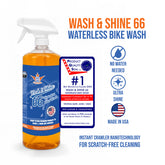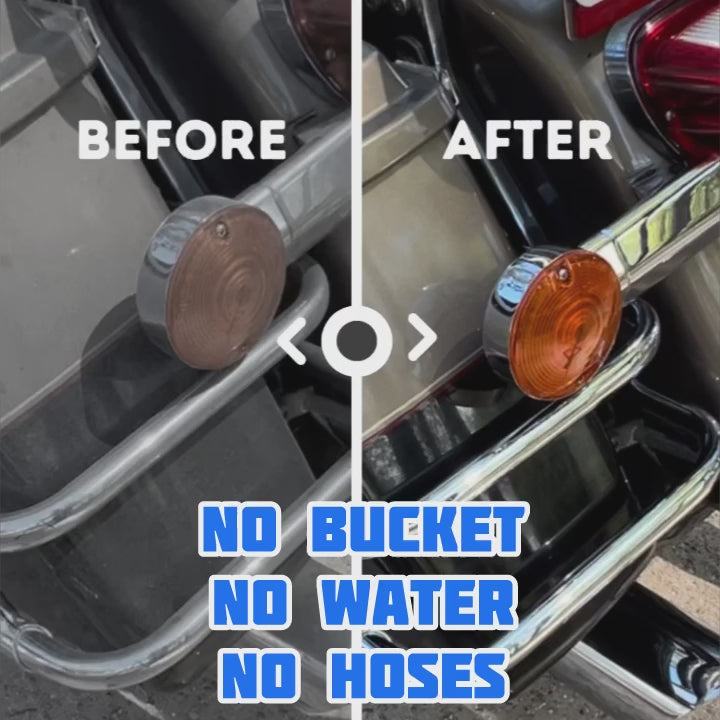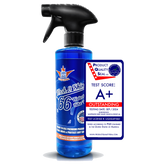Concrete Sealer: My 2-Year Journey Protecting My Patio
Concrete patios and driveways look tough and solid, but there is a hidden weakness right beneath the surface.
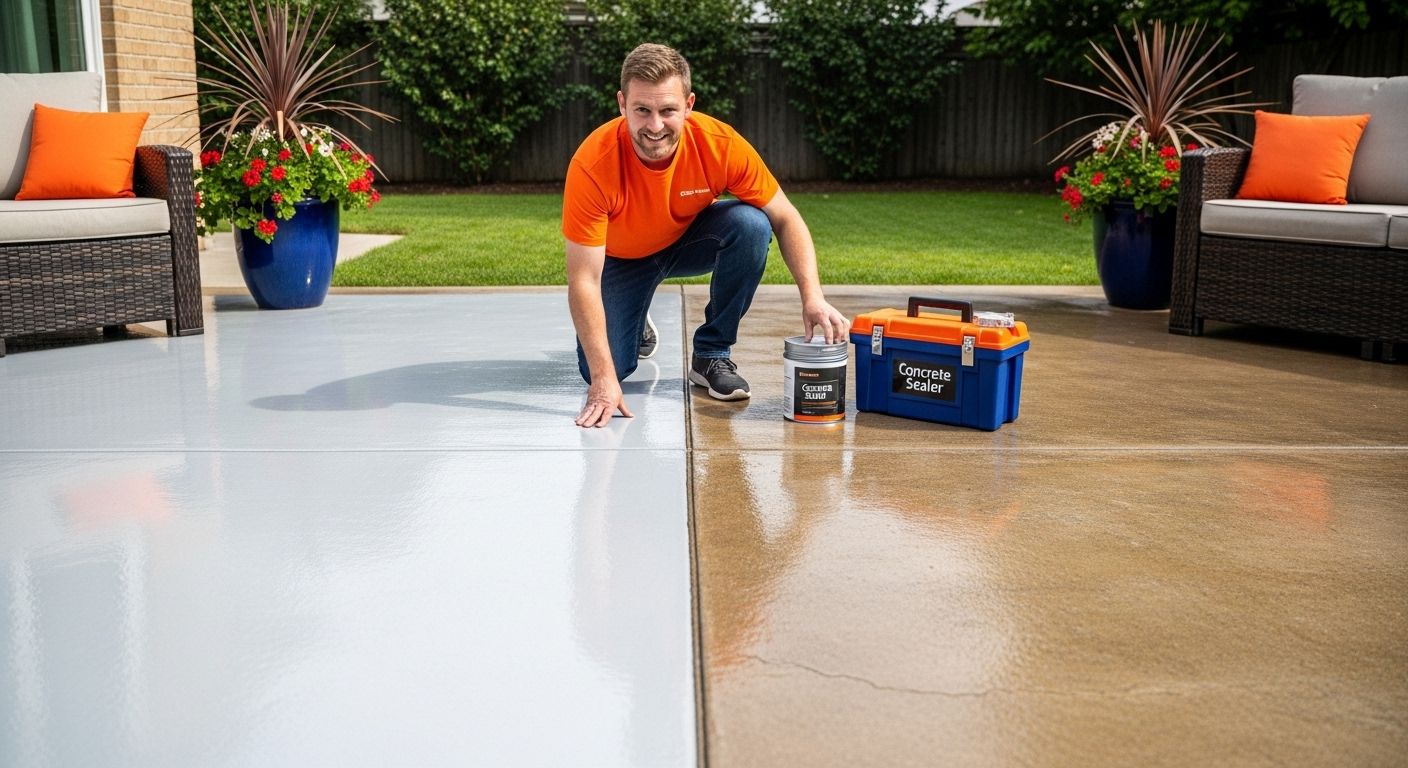
Only a single winter can cause moisture inside concrete to expand by about 9 percent when it freezes, leading to cracks and costly damage. What may surprise you is that the biggest threat comes from everyday elements you cannot even see, and the real solution is not thicker concrete but the science of modern sealers.
Table of Contents
- Understanding Concrete Sealers: What They Are And How They Protect
- The Importance Of Sealing Concrete: Why It Matters For Durability
- How Humidity Affects Concrete: The Role Of Moisture And Sealing
- The Impact Of Grime And Wear: Real-World Challenges For Concrete Patios
- Winter Frost And Concrete Integrity: Protecting Against Cold Damage
Quick Summary
| Takeaway | Explanation |
|---|---|
| Sealing is essential for concrete protection | Concrete is porous and vulnerable to environmental damage; sealing enhances durability and prevents degradation. |
| Use penetrating sealers for long-term defense | These sealers bond internally with concrete, creating a moisture barrier without altering appearance. |
| Sealing prevents costly repairs | Regular sealing minimizes water absorption and reduces deterioration, saving money on repairs and replacements. |
| Humidity affects concrete integrity | Fluctuating moisture levels can degrade concrete; proper sealing maintains strength and aesthetics. |
| Protect against freeze-thaw cycles | Sealing reduces water entry, lowering the risk of frost damage, and preserving structural integrity during winter. |
Understanding Concrete Sealers: What They Are and How They Protect
Concrete sealers are specialized protective treatments designed to enhance the durability and performance of concrete surfaces by creating a defensive barrier against environmental damage. These remarkable solutions work by blocking concrete’s microscopic pores, preventing moisture, chemicals, and other harmful substances from penetrating and degrading the material.
The Science Behind Concrete Protection
At its core, concrete is a porous material composed of cement, water, and aggregate. These tiny interconnected spaces make concrete vulnerable to water absorption, salt intrusion, and temperature-related stress. According to Paint and Coatings Technology Magazine, concrete sealers function through two primary mechanisms:
- Penetrating Sealers: Chemically react within concrete’s structure
- Surface Film Sealers: Create a protective layer on the concrete’s exterior
Types of Concrete Sealers and Their Protection Strategies
Penetrating sealers like silanes and siloxanes chemically bond with concrete’s internal structure, creating a hydrophobic barrier that repels water and prevents salt damage without changing the surface’s appearance.
Surface film sealers such as acrylics and polyurethanes form a visible protective coating that not only shields the concrete but can also enhance its aesthetic appeal.
The protection strategy varies based on environmental conditions and specific usage requirements. For outdoor surfaces exposed to frequent moisture, temperature fluctuations, and potential chemical exposure, selecting the right sealer becomes crucial. Penetrating sealers are particularly effective in regions with extreme weather conditions, providing long-lasting protection without compromising the concrete’s natural texture.
By understanding these protective mechanisms, homeowners can make informed decisions about preserving their concrete surfaces, extending their lifespan, and maintaining their structural integrity against environmental challenges.
The Importance of Sealing Concrete: Why It Matters for Durability
Concrete might appear solid and impenetrable, but its microscopic structure makes it surprisingly vulnerable to environmental degradation. Sealing concrete is not merely a cosmetic enhancement but a critical maintenance strategy that protects your investment and extends the surface’s functional lifespan.
Environmental Threats to Concrete Surfaces
Unsealed concrete acts like a sponge, absorbing moisture, chemicals, and contaminants that can cause progressive damage. According to National Ready Mixed Concrete Association, concrete surfaces face multiple environmental challenges:
- Moisture Penetration: Water enters concrete pores, causing internal stress
- Chemical Degradation: Salt, acids, and other substances break down concrete structure
- Temperature Fluctuations: Freeze-thaw cycles create microscopic cracks
Long-Term Protection and Cost Savings
Concrete sealing provides a proactive defense mechanism that prevents costly repairs and premature replacement. By creating a protective barrier, sealers minimize water absorption, reduce surface erosion, and resist staining from oil, grease, and organic materials. This protective layer significantly slows down the natural deterioration process, transforming concrete maintenance from a reactive to a preventative approach.
The economic benefits of sealing are substantial. Professional concrete restoration can cost thousands of dollars, whereas regular sealing represents a fraction of that expense.
Here is a table summarizing the primary environmental threats to concrete surfaces and how sealing provides protection. This makes it easier for readers to understand the cause, effect, and solution for each threat discussed in the article.
| Environmental Threat | How It Damages Concrete | How Sealing Helps |
|---|---|---|
| Moisture Penetration | Causes internal stress and microscopic cracking | Blocks moisture entry, prevents damage |
| Chemical Degradation | Breaks down concrete structure via salts and acids | Forms barrier against harmful chemicals |
| Temperature Fluctuations | Leads to freeze-thaw cycles and cracks | Reduces water absorption, limits cracking |
| Organic Growth | Algae, moss, and lichen cause surface weakening | Repels water and organic contaminants |
| Physical Abrasion | Foot traffic and debris erode the concrete surface | Adds layer of protection, slows erosion |
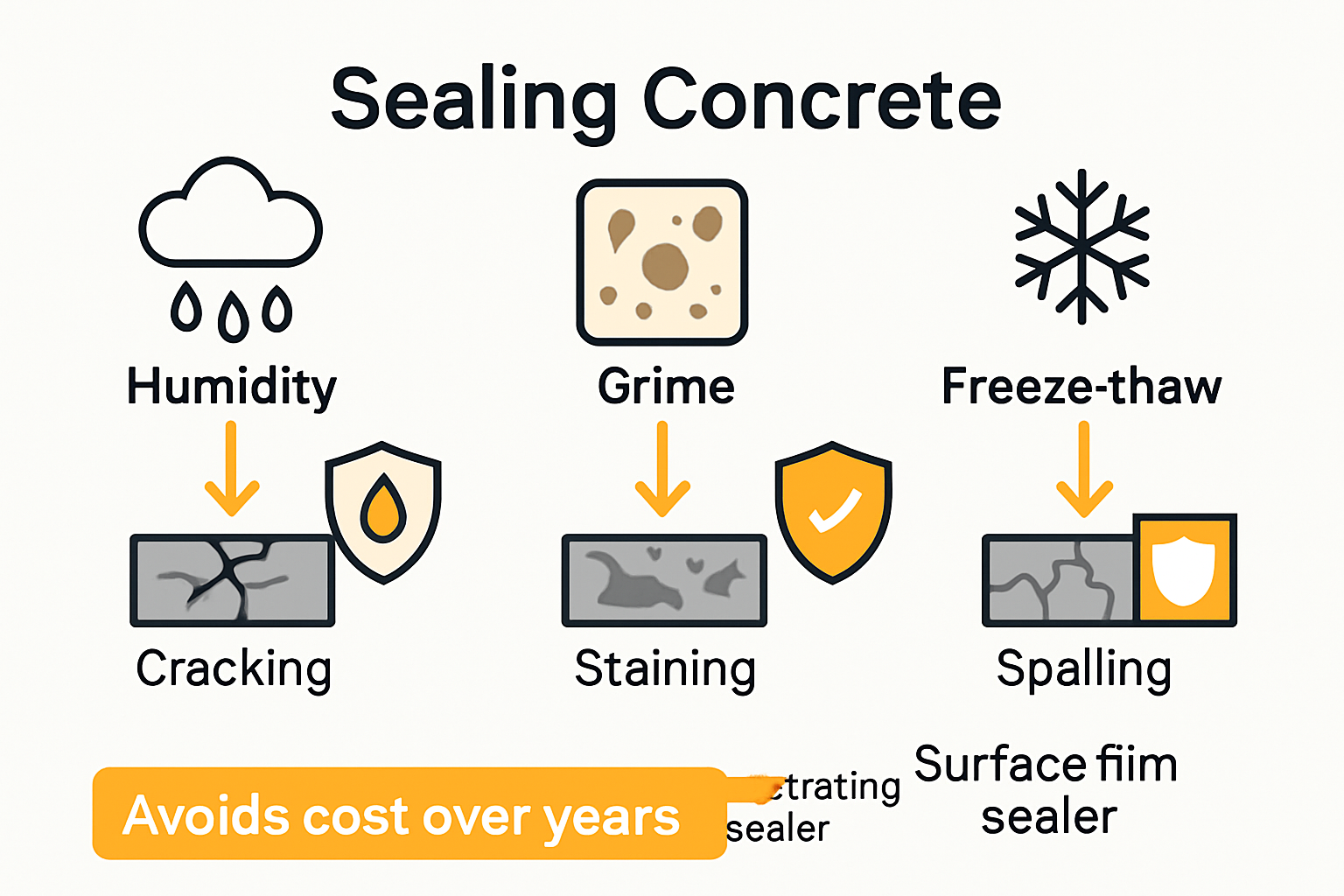
Homeowners who invest in quality sealers can expect to extend their concrete surfaces’ functional life by several years, reducing long-term maintenance expenses and preserving the structural integrity of driveways, patios, and walkways.
Ultimately, concrete sealing is not an optional luxury but a strategic investment in protecting your property’s infrastructure and maintaining its aesthetic and functional value.
How Humidity Affects Concrete: The Role of Moisture and Sealing
Humidity represents a critical environmental factor that can significantly impact concrete’s structural integrity and long-term performance. While concrete appears solid, its porous nature makes it exceptionally vulnerable to moisture infiltration, which can lead to progressive degradation and structural compromise.
Moisture Dynamics in Concrete Structures
Concrete acts like a sophisticated sponge, absorbing and releasing moisture based on environmental conditions. According to National Center for Biotechnology Information, relative humidity plays a crucial role in concrete’s carbonation process and compressive strength. When humidity levels fluctuate, concrete experiences complex internal stress mechanisms:
- Expansion and Contraction: Moisture causes concrete to swell and shrink
- Microstructural Changes: Water penetration alters concrete’s internal composition
- Potential Chemical Reactions: Moisture can trigger degradation processes
Sealing as a Moisture Management Strategy
Penetrating concrete sealers provide a sophisticated moisture barrier that interrupts these destructive cycles. By chemically bonding with concrete’s molecular structure, these specialized treatments create a hydrophobic shield that prevents water molecules from entering concrete’s microscopic pores. This protective mechanism dramatically reduces moisture-related damage and helps maintain the concrete’s structural integrity.
The implications of uncontrolled moisture extend beyond surface-level concerns. Prolonged exposure to high humidity can compromise concrete’s strength, accelerate corrosion of internal reinforcement, and create ideal conditions for mold and algae growth. Effective sealing transforms concrete from a passive material into an actively protected surface, resistant to environmental challenges and capable of maintaining its structural and aesthetic properties for significantly longer periods.
The Impact of Grime and Wear: Real-World Challenges for Concrete Patios
Concrete patios are exposed to a relentless barrage of environmental and human-induced challenges that gradually erode their structural integrity and aesthetic appeal. Beyond the visible surface, these outdoor spaces endure a complex interaction of elements that can accelerate deterioration if left unprotected.
Sources of Concrete Surface Degradation
Every concrete patio faces a unique combination of wear factors that contribute to its gradual breakdown. According to American Concrete Institute, multiple mechanisms work simultaneously to compromise concrete surfaces:
- Organic Growth: Moss, algae, and lichen penetrate concrete’s microscopic pores
- Chemical Contamination: Oil, grease, and environmental pollutants cause staining
- Physical Abrasion: Foot traffic, furniture movement, and debris create surface wear
Cumulative Impact of Environmental Exposure
Unprotected concrete becomes increasingly vulnerable with each passing season. The porous nature of concrete allows contaminants to infiltrate deeply, creating a progressive cycle of degradation. Grime doesn’t just sit on the surface it integrates into the concrete’s molecular structure, creating permanent discoloration and structural weakening.
The microscopic damage caused by daily exposure compounds over time, transforming what begins as minor surface imperfections into significant structural challenges. Unsealed concrete acts like an absorbent material, drawing in dirt, moisture, and potentially harmful chemicals that accelerate its natural breakdown process. Regular sealing interrupts this destructive cycle, creating a protective barrier that repels contaminants and preserves the concrete’s original condition, ultimately extending the patio’s functional and aesthetic lifespan.

Winter Frost and Concrete Integrity: Protecting Against Cold Damage
Concrete surfaces are particularly vulnerable during winter months, facing a complex series of environmental challenges that can compromise their structural integrity. The combination of moisture, freezing temperatures, and repeated temperature cycling creates a destructive environment that can rapidly degrade unprotected concrete surfaces.
The Mechanics of Frost Damage
When water penetrates concrete’s microscopic pores and subsequently freezes, it undergoes a significant volumetric expansion. According to the Portland Cement Association, this process creates internal hydraulic pressure that can cause progressive structural damage:
- Water Expansion: Frozen water increases volume by approximately 9%
- Microscopic Cracking: Repeated freeze-thaw cycles create progressive internal damage
- Structural Weakening: Each cycle incrementally reduces concrete’s compressive strength
Preventative Sealing Strategies
Penetrating concrete sealers provide a critical defense mechanism against winter-related deterioration. By creating a hydrophobic barrier that dramatically reduces water absorption, these specialized treatments interrupt the fundamental mechanism of frost damage. The sealed concrete prevents moisture from entering its internal structure, effectively neutralizing the primary cause of freeze-thaw damage.
The long-term implications of unmitigated frost damage extend far beyond surface-level aesthetics. Repeated freezing and thawing can create progressive microstructural changes that compromise concrete’s load-bearing capacity, leading to potential structural failures. Proactive sealing transforms concrete from a passive material into an actively protected surface, capable of withstanding extreme temperature variations and maintaining its structural integrity throughout challenging winter conditions.
Give Your Concrete Patio the Lasting Defense It Deserves
After two years of battling humidity, grime, and brutal winter frost, you know how relentless the elements can be. Unsealed concrete absorbs water, harbors stains, and suffers from continuous freeze-thaw damage. The difference that a high-quality sealer brings—by blocking moisture and stains before they ever enter your patio—cannot be overstated. If you want to stop worrying about ugly stains and cracks returning every season, it is time to take action.
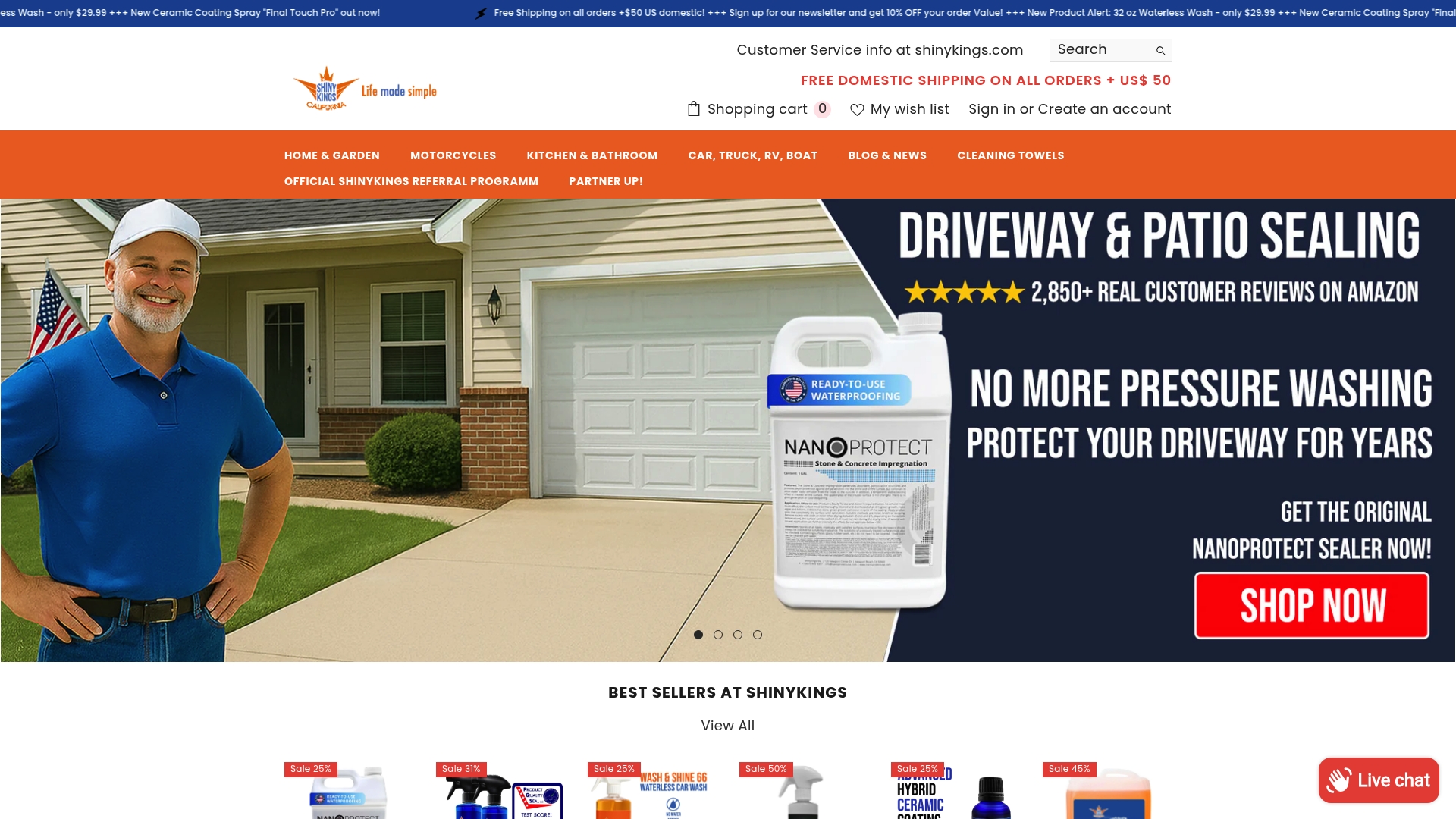
Choose real protection for your home’s most exposed surfaces. Discover how the world-unique concrete sealer and special coatings from ShinyKings create invisible shields that lock out moisture and defend against environmental stress. Enjoy peace of mind knowing your patio is safe from future grime and cold-weather threats—experience the restoration experts trust. Do not wait until another year of wear and weather passes—visit ShinyKings now to see how you can start protecting your outdoor investment today.
Frequently Asked Questions
What is a concrete sealer and how does it protect my patio?
Concrete sealers are protective treatments that enhance the durability of your patio by blocking moisture, chemicals, and contaminants from penetrating the concrete. They create a defensive barrier that maintains the surface’s integrity and appearance.
How often should I apply a concrete sealer to my patio?
The frequency of sealing depends on the type of sealer used and environmental conditions. Typically, penetrating sealers need reapplication every 3 to 5 years, while surface film sealers may require annual maintenance. Regular assessments after heavy weather can also guide your sealing schedule.
What are the differences between penetrating sealers and surface film sealers?
Penetrating sealers chemically bond with the concrete to create a hydrophobic barrier without changing the surface appearance. In contrast, surface film sealers form a protective layer on the exterior, which can enhance aesthetics but may require more maintenance. Choosing the right type depends on your patio’s exposure and personal preference.
How does humidity affect my concrete patio and its sealing?
High humidity can lead to moisture infiltration in concrete, causing damage over time. A quality concrete sealer helps manage moisture by preventing water absorption, thereby extending the patio’s structural integrity and reducing the risk of mold and algae growth.


